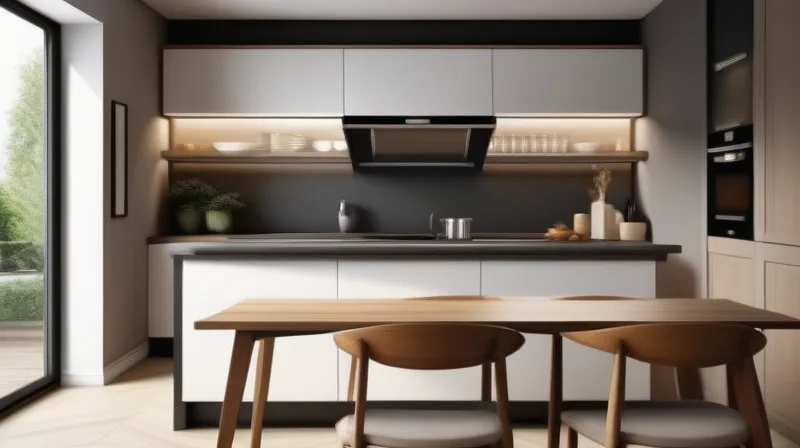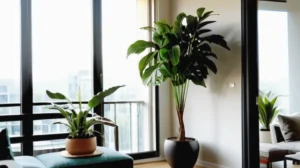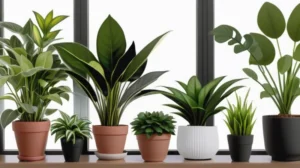Discover how air purifiers can improve your health, reduce allergies, and create a cleaner home environment in just seven days.
Table of Contents
Hello, and welcome to our blog! Today, we’re diving into the world of air purification and indoor plants. It’s no secret that the air we breathe has a direct impact on our health and well-being. With the rise of air pollution and indoor toxins, more and more people are turning to air purifiers and indoor plants to clean up the air in their homes.
Clean indoor air is essential for our health, but it’s often something we overlook. Air purifiers and indoor plants are becoming increasingly popular for their ability to remove pollutants, allergens, and toxins from the air we breathe. In this blog post, we’ll explore the benefits of using air purifiers and indoor plants for cleaner indoor air.
The Role of Air Purifiers
Air purifiers work by filtering out pollutants and particles from the air, such as dust, pollen, pet dander, and smoke. They use different technologies, including HEPA filters, activated carbon filters, UV-C light, and ionizers, to clean the air. By removing these contaminants, air purifiers can help improve respiratory health, reduce allergy symptoms, and eliminate unpleasant odors in your home.
Benefits of Using Indoor Plants
Did you know that indoor plants can act as natural air purifiers? Through a process called phytoremediation, plants absorb pollutants through their leaves and roots, helping to clean the air around them. Some plants, such as spider plants, peace lilies, and aloe vera, are particularly effective at filtering out toxins like formaldehyde, benzene, and trichloroethylene.
Combining Air Purifiers and Indoor Plants
For maximum air quality, consider using both air purifiers and indoor plants together in your home. Air purifiers can capture larger particles and allergens, while plants can absorb airborne toxins and release oxygen back into the air. By strategically placing plants and purifiers throughout your space, you can create a healthier and more breathable environment.
Choosing the Right Air Purifier and Indoor Plants
When selecting an air purifier, consider factors like the size of the room, the type of filtration system, and any specific needs or allergies you may have. Look for reputable brands that have been tested and certified for their effectiveness. As for indoor plants, opt for low-maintenance varieties that are known for their air-purifying abilities, such as snake plants, pothos, or rubber plants.
| Benefit | Description |
|---|---|
| 1. Removes allergens | Air purifiers capture and remove common allergens like pollen, dust mites, and pet dander, providing relief for allergy sufferers. |
| 2. Improves air quality | Filters in air purifiers help to remove pollutants and toxins from the air, leading to cleaner indoor air. |
| 3. Reduces odors | Air purifiers can help to eliminate unpleasant odors caused by cooking, pets, and smoke, leaving your home smelling fresh. |
| 4. Protects against germs | Certain air purifiers are equipped with UV-C light or ionizers to kill bacteria and viruses, providing added protection against illness. |
| 5. Improves sleep | Cleaner air can help improve sleep quality by reducing irritants that can cause breathing problems, snoring, and other sleep disruptions. |
| 6. Enhances lung health | By reducing airborne pollutants, air purifiers can help to protect lung health and lower the risk of respiratory issues. |
| 7. Increases overall well-being | Breathing cleaner air can lead to overall improved health and well-being, helping you feel more energized and focused throughout the day. |
Conclusion
With the benefits of air purifiers and indoor plants in mind, why not take a step towards cleaner indoor air today? By incorporating these simple yet effective methods into your home, you can breathe easier, reduce your exposure to pollutants, and create a healthier living environment for you and your loved ones. So go ahead, bring some greenery into your space, and let the air purifiers do their magic. Your lungs will thank you!
Thanks for joining us on this journey towards cleaner indoor air. Until next time, remember to breathe easy and stay healthy!
FAQ
Do air purifiers really work?
Yes, air purifiers are effective in removing allergens, pollutants, and odors from the air. They use filters and technology to clean the air, improving indoor air quality and reducing respiratory issues.
Can indoor plants replace air purifiers?
While indoor plants have air-purifying properties, they may not be as effective as air purifiers in removing specific pollutants and allergens. Using both plants and purifiers together can provide optimal air quality benefits.
How often should air purifier filters be replaced?
It’s recommended to replace air purifier filters every 6-12 months, depending on usage and the type of filter. Regular filter replacement ensures the purifier continues to function effectively in capturing airborne particles and pollutants.
Are air purifiers noisy?
Some air purifiers may produce noise, similar to a fan running. However, many modern models are designed to operate quietly, especially at lower speeds. Look for air purifiers with noise-reducing features if noise levels are a concern.
Generated by Texta.ai Blog Automation





